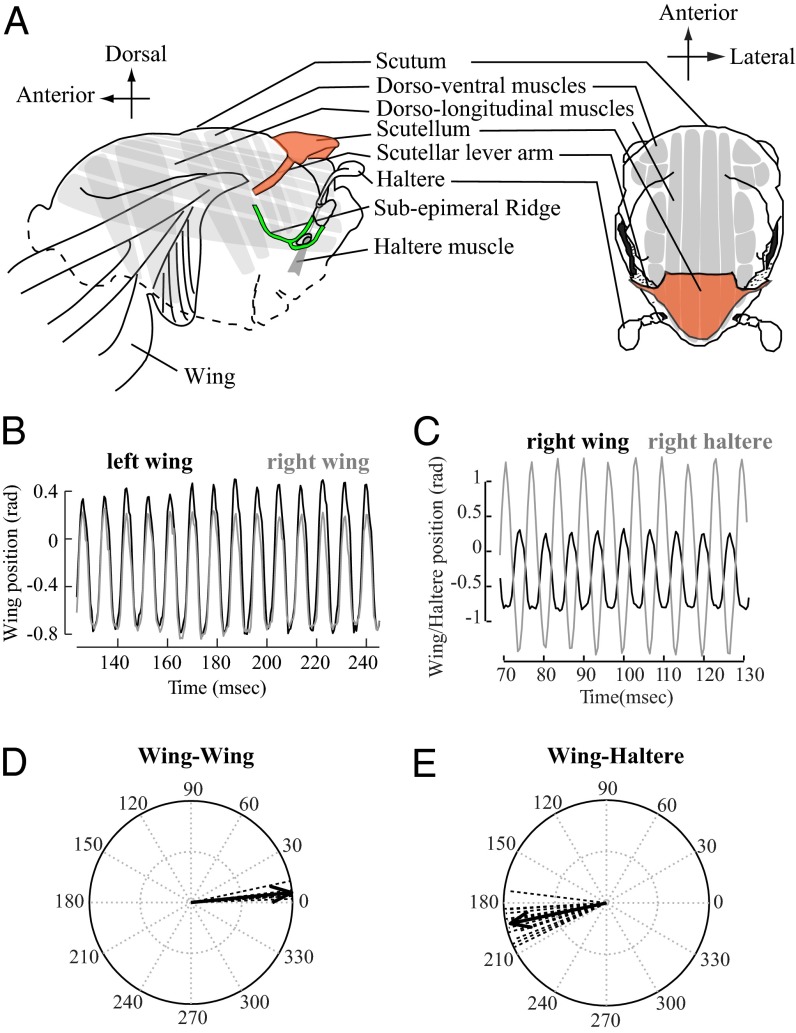Fig. 1.
Wings and halteres are precisely coordinated at high frequencies ≥100 Hz. (A) Diagram of Dipteran thorax in lateral and dorsal view. (B) The right (gray) and the left (black) wings move in phase with each other. (C) The wing (black) and the ipsilateral haltere (gray) move antiphase to each other. (D) Vector strength representation of control data for wing–wing phase (tethered flies; n = 6; mean phase angle ϕ = 5.63°, vector length r = 0.9965; P < 0.001; nonparametric Moore’s test for uniformity). Dotted lines indicate the mean vector (∼20 wing strokes) for individual insects, and solid line indicates mean for the treatment. (E) Vector strength representation of control data of wing–haltere phase (tethered flies; n = 12; ϕ = 192.14°; r = 0.9572; P < 0.001; right and left side data pooled).

